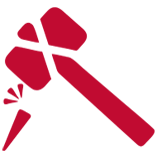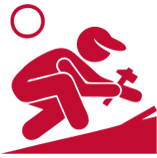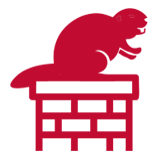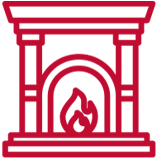Fireplaces are the perfect focal point and just happen to provide a fantastic ambiance while saving you money on your monthly energy bills.
There is one thing stopping you from enjoying gas fireplaces and wood-burning fireplaces: Some common fireplace myths floating around the internet.
Maybe your neighbor swears that newer fireplaces do not need to be inspected often, or your aunt has heard that fireplaces flood your home with cooler air in winter. Whatever the case, most of the information is, in fact, based on misinformation and myths.
Instead, if you need comprehensive chimney inspection services or reliable chimney lining services or to have a few myths dispelled, it is better to defer to the pros at The Kings!

Busting These Five Common Chimney and Fireplace Myths and Misconceptions
Nothing compares to the warm comfort and romantic atmosphere created by wood fireplaces, but you have decided that fireplaces aren’t for you because of the many downsides.
Trust the Chimney Kings: You have been badly advised by friends, family, and neighbors who informed you that wood-burning and gas fireplaces are not worth the hassle.
With several years of fantastic experience serving the wonderful residents of Denver, CO, we can do more than keep the home fire burning, including quality brick tuckpointing for chimney maintenance and emergency roof tarping solutions.

Not Burning Wood? You Don’t Need to Have Your Chimney Walls Cleaned and Fireplace Inspected
Using a burning wood fireplace infrequently means you do not need to schedule yearly maintenance or have the actual fireplace cleaned every six months, right? Infrequent use is no excuse for not properly maintaining your chimney and fireplace.
Instead, we strongly advise you to schedule regular sweeping and inspections to ensure that your fireplace is in perfect working condition when you are ready to roast marshmallows on an open fire.

The Vital Importance of Regular Maintenace and Regular Sweeping of Your Denver Chimney
Do you enjoy the convenience of a gas fireplace, the reliability of a wood-burning fireplace, or the cost-saving of an electric fireplace?
The experts at the Chimney Kings still recommend scheduling your regular cleaning and inspections. Remember, your fireplace isn’t only a supplemental heating source but also an investment in your home.
In the case of a traditional wood model, routine maintenance is critical to preventing poor indoor air quality and, in the most extreme cases, accidental indoor fires.
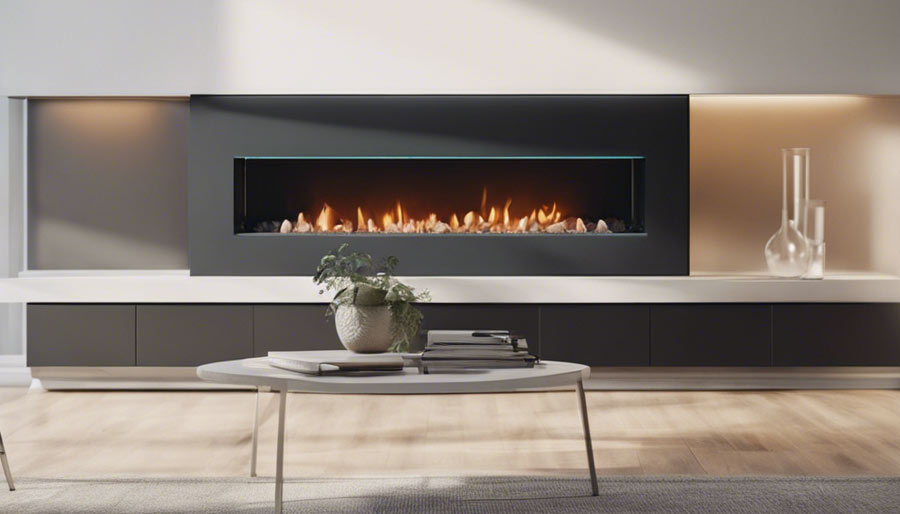
Gas Fireplaces Are Always Safer Than Wood-Burning Fireplaces
One of the most potentially dangerous and pervasive fireplace myths is the idea that gas fireplaces are unequivocally safer than wood fireplaces in every category.
While it is true that gas models allow you to control the burn, are often better ventilated, and produce less smoke, there are still inherent dangers to using gas fireplaces, including:
- Carbon monoxide poisoning and improper ventilation: To the untrained eye, your gas fireplace works perfectly. However, improper ventilation can lead to gas leaks and the potential for carbon monoxide poisoning.
- Improper seals and house fires: Failing to check the seals often can cause an unexpected house fire.

Check Your Gas Fireplace’s Structural Integrity and Natural Gas Connection
Sure, gas fireplaces eliminate the need for regular chimney sweeping. You must still pay attention to the ventilation and often check the natural gas connection to prevent house fires or carbon monoxide poisoning.
Need help with how to check the gas connection? Do not sweat it because we have your back!
In addition to providing a spectacular comprehensive range of chimney services, we offer chimney crown repair and maintenance for your entire gas fireplace system.
Burning All Types of Woods Creates the Same Amount of Acidic Deposits in the Chimney
Wood is wood, correct, and all types of wood are suitable for your wood-burning fireplace. Unfortunately, many homeowners fall into this unfortunate trap and assume it is okay to burn any type of wood.
When it comes to your wood-burning model, not all woods are created equally, and it is vital to burn the correct type of wood to prevent dangerous amounts of excess creosote.
Does Burning Green Wood Produce More Creosote and Create Acidic Deposits?
Yes, green wood, or unseasoned wood, does create excessive creosote damage and buildup. Creosote is that sticky, tarry substance on the firebox back wall and inner chimney liner.
Because unseasoned woods have a higher moisture content, more smoke is created, which, in turn, leads to the formation of more creosote. Prevent excess creosote buildup by avoiding burning other soft woods at lower temperatures and instead keep the fire hot and stoked.
Low-temperature fires lead to the creation of more creosote. Wood should have 20% moisture content. Our team offers expert chimney repair solutions in Denver, including repairs caused by creosote accumulation.
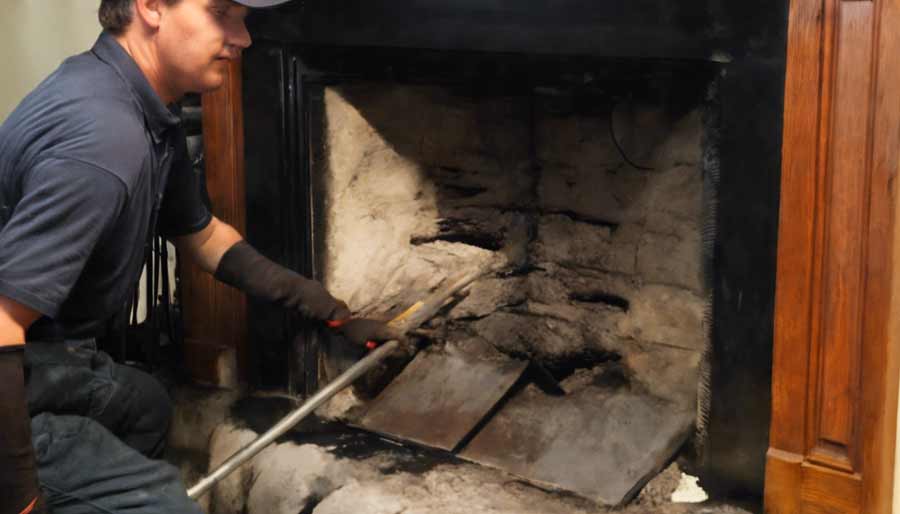
Cleaning the Chimney Lining is a Simple DIY Project
Newer metal chimney stack liners are more efficient and easy to clean, eliminating the need for a professional chimney sweep to clean all components in the chimney, from the chimney stack to the firebox and chimney cap.
Whether your chimney features the latest metal liner or is an older model straight from the 19th century, with separate chimney pots for the fire upstairs and downstairs fire, you still need to have your liner and the rest of the fireplace cleaned by a pro.
Avoid sweeping your chimney yourself; this is a labor-intensive chore that is more dangerous than you might think.
This technical chore requires the proper knowledge, equipment, and expertise, and we can do it all and so much more at the Chimney Kings!
This is why Chimney Kings offers professional chimney sweep cleaning services and firebox repair for enhanced fireplace safety.

Chimney Sweeps Have Skills and Training
Chimney cleaning is a highly technical job that requires expert hands and proper safety training.
When you work with the Chimney Kings, you can rest assured that each chimney sweep pro we employ is trained according to a nationally recognized standard.
While on the roof cleaning and inspecting chimneys, our team can also perform chimney crown repair and maintenance and specialized fireplace repairs.
Unless you have long brushes, a chimney sweep inspection camera, and very long gloves, you should always trust a professional to clean your chimney.
It’s Frigid Inside My Denver House: Fireplaces Actually Make My House Colder
Your fireplace features a masonry flue that runs upwards the length of the inner chimney. Fires require oxygen to burn, and your wood-burning model pulls in the surrounding air to ensure a clean, even burn.
The notion that fireplaces make the room cooler rather than hotter is partially true, but don’t worry because it is an easy fix, and we have your back!
Install a fireback on the fireplace’s back wall, close the damper when the fireplace is not in use, and purchase decorative fireplace doors.
Keeping your fireplace in tip-top condition is critical, so you must watch out for the top five signs you need chimney repair in Denver and follow this handy fireplace safety guide for homeowners.
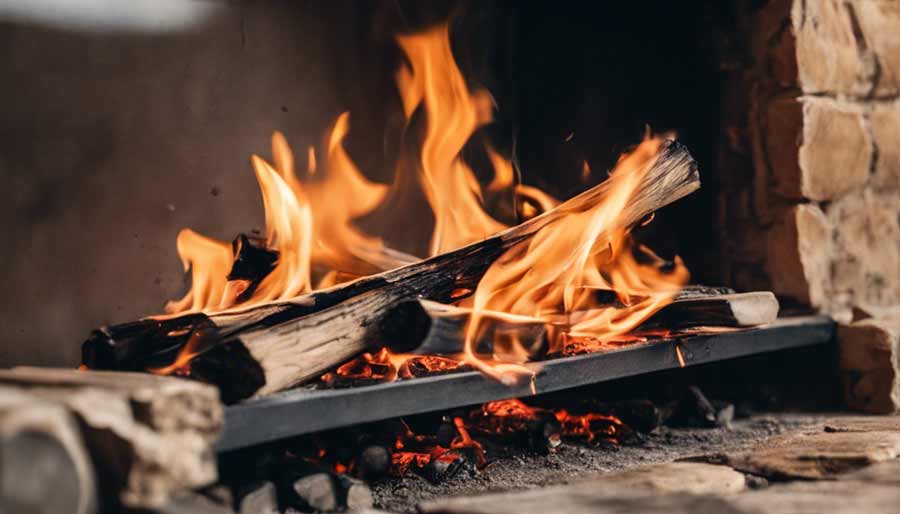
Increase the Efficiency of a Wood Fireplace
Unfortunately, although “traditional” fireplaces are cozy and elegant, they are also notoriously inefficient. Follow these tips to improve your fireplace’s efficiency:
- Only burn seasoned woods: Purchase and burn hard or soft wood that has been dried and seasoned for at least six months, as this will ensure the moisture content is definitely low enough and you are not in danger of increased creosote buildup.
- Close the damper: After the fire is out and all the embers have been extinguished, close the damper to prevent most cold air from entering the home through the open chimney.
- Install glass doors: Functional and beautiful, etched glass doors will keep drafts from entering your home and will also keep curious kids out of your fireplace.
From a Multi-Fuel Stove to Smokeless Coal and Traditional Wood Fireplaces – Our Team Can Help You Understand Your Options
Cleaning chimneys is a skilled trade, and luckily for you, when it comes time for the burning season, aka winter, our team can help you ensure your fireplace is in proper working order.
Contact us today to schedule regular inspections, a top-down sweeping, and so many more excellent services, including:
- Unexpected repairs: Need a repair ASAP? We provide repairs to both wood and gas fireplaces.
- Animal removal: Have a critter calling your actual fireplace or chimney home? We offer professional animal removal from chimneys.
- Regular maintenance: From smokeless fuel fireplaces to electrical and traditional models, we maintain and service every variety of fireplace in the Denver area.

Our Amazing Customers Also Ask
What makes a chimney unsafe?
In addition to dangerous levels of creosote, other issues can compromise your chimney’s safety, including:
- Damage to the chimney liner: Most fires will not burn efficiently if there is any damage to the liner; this is a perfect reason why and when you need to get a Denver chimney inspection.
- Obstructions: From excess creosote to snow in winter and animals, several obstructions can damage the chimney and prevent smoke from efficiently exiting the house, leading to a backdraft to smoke into the home.
- Mold growth: If you have a masonry chimney, the constant temperature fluctuations in winter cause moisture in the porous bricks to expand and contract, leading to leaks and mold.
- Cracks in the one flue: Cracks in the masonry and liner can cause carbon monoxide leaks in the home, resulting in carbon monoxide poisoning, a serious and potentially deadly issue.
How do you check the integrity of a chimney?
Hire a professional to perform a test called a chimney integrity pressure test. First, the chimney sweep will thoroughly clean the chimney and visually inspect every component, from the open fire box to the liner and the chimney cap.
Next, the chimney’s top and bottom are sealed, and smoke is blown into the chimney. Don’t worry, it is safe!
Ideally, there is no smoke blowing into the home from any rooms where the chimney is exposed, and the results are used to perform any necessary repairs, including a durable chimney cap installation!




